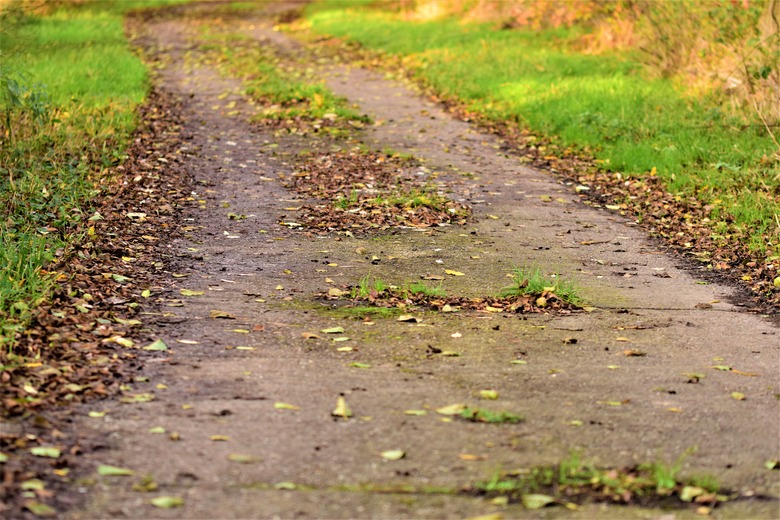How To Grow Grass On Concrete
We may receive a commission on purchases made from links.
Growing grass over concrete is an effective method for repurposing an old patio, sidewalk or driveway. In fact, turfgrass is one of the few plants with roots shallow enough to be grown over concrete with few to no adverse effects. However, waterlogged soil is a potential problem you may face when growing grass over concrete.
Clean the Concrete Area
Clean the Concrete Area
Depending on the previous use of the concrete pad, you'll want to start by cleaning the concrete surface. Substances on the concrete could leach into the soil and harm the grass, disrupt nutrient intake or alter soil pH. For example, sweep up any de-icing salt before continuing.
Add High-Quality Topsoil
Add High-Quality Topsoil
If the concrete pad is surrounded by grass, add at least 2 inches of high-quality topsoil on top of the concrete. The soil will compress over time, so it's best to make it about 1 inch higher than the surrounding grass. This will also help water drain away from the concrete. If the concrete is not surrounded by grass, consider creating a raised bed with treated 2x2s or 2x4s to contain the soil.
Turfgrass roots are shallow, and only about 1 inch of nutrient-rich soil is necessary for growing turfgrass. However, adding more soil than strictly necessary improves water drainage, as concrete will significantly impede water drainage under the grass. Grass can experience root rot or nutrient deficiencies when there's too much water in the soil.
Alternatives to Topsoil
Depending on the size of the concrete you wish to cover, topsoil can be costly and impractical. Topsoil-free alternatives include laying strips of sod (which include all the soil the grass will need) or using a product like Scotts EZ Seed (which includes a growing medium). These alternative methods may not be appropriate in areas that experience a lot of standing water after a rain.
Choosing, Applying and Maintaining Seed
Choosing, Applying and Maintaining Seed
Choose a turfgrass species to ensure the roots will stay shallow. Avoid planting native grasses over concrete, as their roots may not survive without adequate soil depth. Other important factors to consider include the amount of sunlight and foot traffic the area receives. Once you have prepared the concrete area and have chosen the best grass seed, you can apply the seed exactly as you would for any other lawn. Follow the manufacturer's instructions for the seeding rate and use a hand spreader or push spreader for even dispersal.
Keep the soil moist while the grass seed germinates and then water only when the soil dries out or the grass seems to suffer. When in doubt, dig down a little to see if the soil is dry around the roots. If so, water sparingly. Check the soil again the next day and repeat if it still seems dry around the roots.
Aerate, fertilize and overseed the grass on a seasonal basis the same way you would for any lawn. Set aeration tools to the proper height to ensure they aren't damaged by hitting the concrete.
